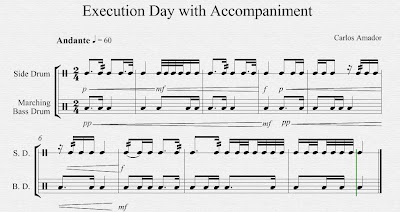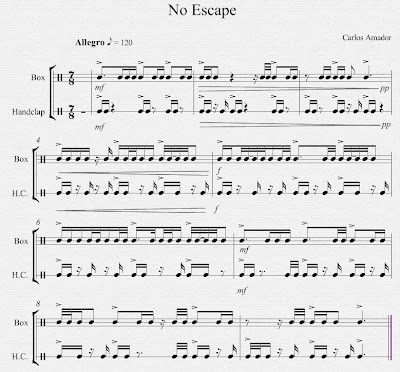Project 3: Three or more Instruments
Compose two larger compositions making sure they are based on a principal idea and there is a defined structure.
The Invasion
The idea for this piece is to recreate the atmosphere of an invasion. I have used a ABC structure using time signatures of 4/4 for sections A and C and 7/8 with 3 2 2 grouping for section B. Sections A and C portray the arriving and leaving scenes, reason for which a metre 4/4 is used which is like a non-stop engine while section B portray the confrontation itself and uses a more irregular metre with grouping 3 2 2. Each of the sections has some bars that are piano which try to convey certain insecurity. For this, the following 3 things apply: a) another instrument (Ratchet) is introduced with the same leading role but higher pitch that the snare drum; b) Both instrument voices are separated creating a dialog between both instruments and c) the volume of all the instruments is lowered and the cymbals are not played when the rest of the instruments are p or pp. Congas are used for a simple accompaniment because of their low pitch and cymbals are used to highlight some of the music accents.
Section C is composed of three of the bars in section A although the have a different order being the last bar exactly the same than the first one with an additional tremolo.
Alone
This rhythmic music is based on a Solea rhythm, which is a ¾ time signature with accents in the 3rd beat in first 2 bars and accents in the beat 2 and 1 in the last two bars. Handclap and maracas have an accompaniment role to reinforce the accents of the rhythm while the congos congos fill those beats that are not accentuated while the congos congos





